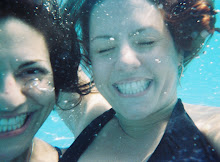
Those were the words of the legendary Eddie Adams. He is just one of the Pulitzer Prize Photographers highlighted in the exhibit at the Newseum in Washington DC.
In the Newseum’s Pulitzer Prize Photographs Gallery, I was very moved by the world’s greatest news photographs. There were six floors of exhibits, but I am going to focus on the Pulitzer Prize Photograph exhibit. Every Pulitzer winning photo was represented since 1942 to the present. The exhibit was unsettling at times, with graphic images of the world’s history. More than once, I got chills staring at the images of war, famine and natural disasters. True to the human spirit, there were many photos that made me feel hope and some that even made me smile.
A very nice thing about this exhibit was it was very interactive. There was a movie in the center of the photographs that ran on a continuous twenty-minute loop. It highlighted a number of the photographers that had won Pulitzers. It was really fascinating to see the images that came before and after the “money shot.” I particularly enjoyed being able to hear the stories of the events unfolding around these journalists during the different situations they were asked to cover.
Many of the photographers were still visibly distraught concerning the different stories they had been asked to document for the world. There was an image from a mudslide in Armero, Columbia that Carol Guzy and Michel DuCille captured. She explained how the woman, who had been trapped in water for 72 hours, was talking and reaching out to the people who were attempting to get free her. Even though so many were trying to help, she ended up drowning because there was no way to release her from whatever was trapping her underneath the muddy water. Guzy expressed her disbelief that it was not possible to save this innocent woman. The picture that won the Pulitzer was the last shot before she went under. Guzy made it clear you cannot go out searching for a Pulitzer; you just have to be there for that moment between life and death. You just have to get that shot. The shot that makes you question whether you should of helped instead of staying behind the lens. The shot that wakes you up in the middle of the night asking why things couldn’t of happened differently. The images are haunting in a way that video is not. The still image is so powerful. In just one photograph a story is told to the entire world. These images have helped shape history. I can only imagine how hard it must be to strike a balance between doing your job and acting like a human being.

No comments:
Post a Comment